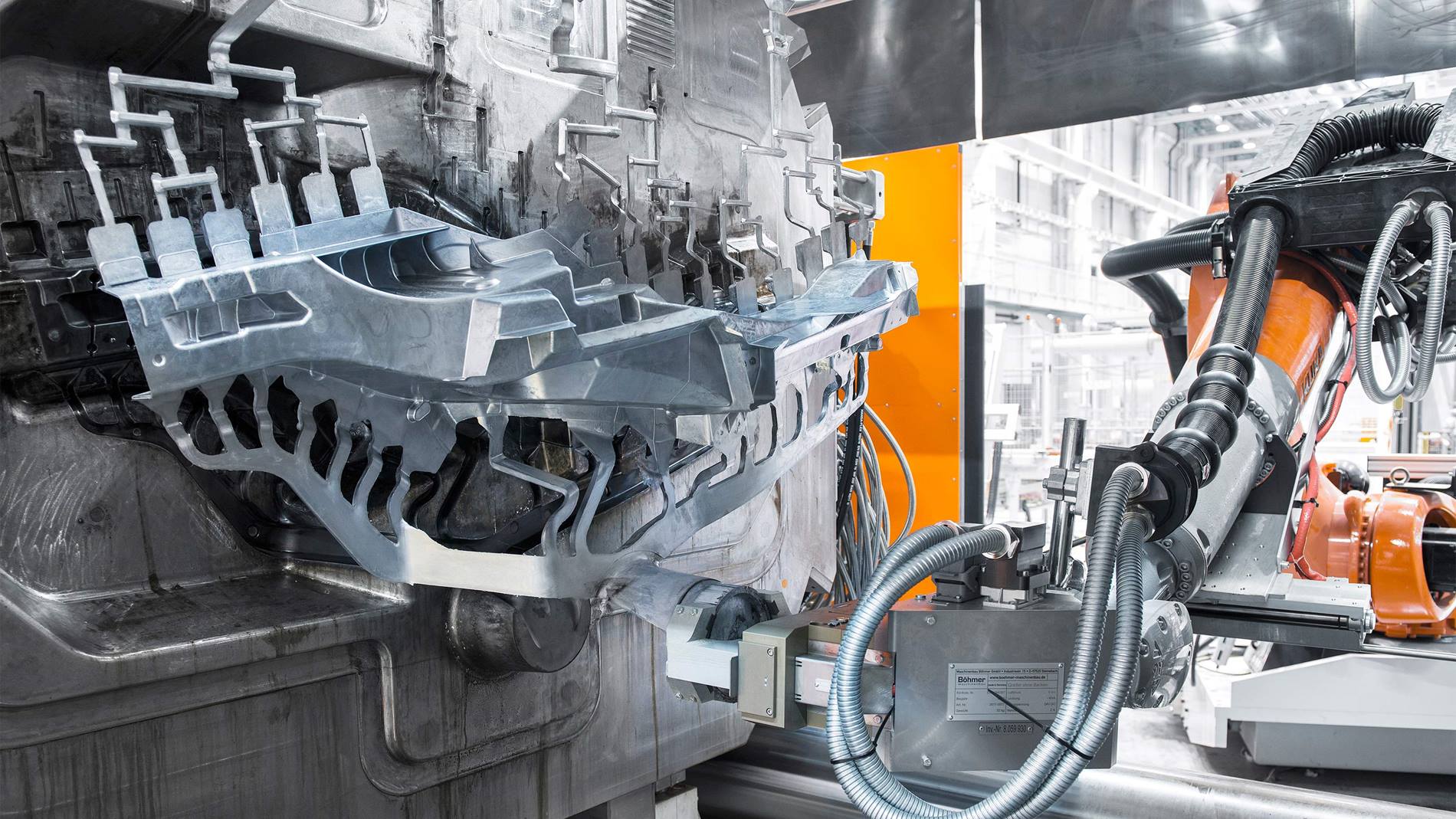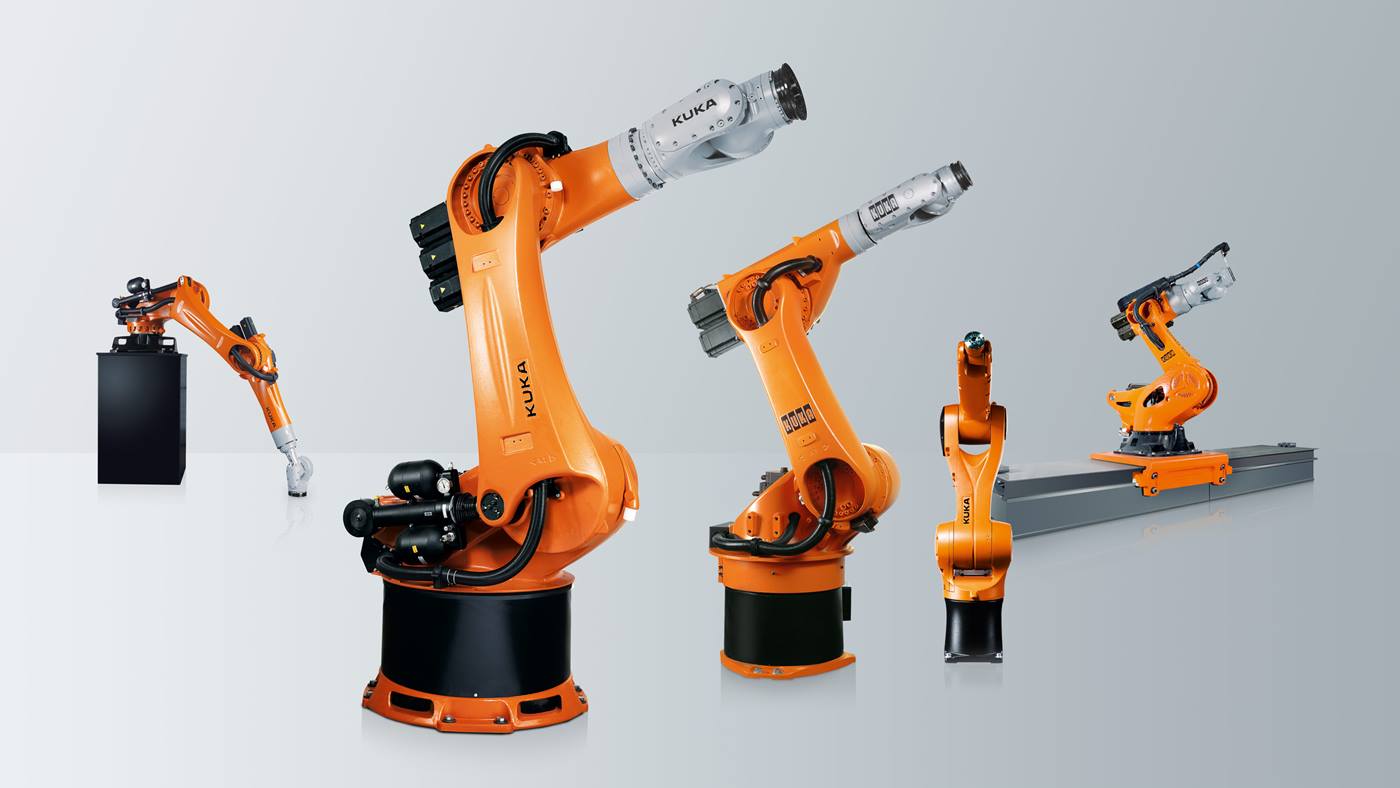Die casting: the technology
In die casting, the melt is pressed into a mold under high pressure, where it solidifies. This process achieves a high casting quality despite the high speed at which it is performed and is especially suited to thin sheet metal.
What is special about this casting technology is a permanent mold, which – once manufactured – can be used for tens of thousands of parts. For this reason, die casting is used primarily in the series or mass production of structural parts.
Automated die casting
KUKA has all die casting tasks covered from the die casting machine onwards: starting with foundry-compliant unloading from the die casting machine through to mold spraying and the cooling-off of components and on to deburring using trimming presses and trimming tools.
From process simulation and visualization to downstream machining, including cell control and quality assurance, proven integrated in-house solutions are available to meet all needs – from machine unloading to the finished component.
Die casting: the advantages
- The entire system is controlled from end to end and without interface problems.
- Service-proven software developed in-house connects all components including the periphery.
- On the basis of the VDMA interface standardization DISPO, the robot controller collects information from all active components and peripheral devices, and evaluates it as the lead system.
- A monitor in the command panel on the casting cell provides all production-relevant information at a glance.
- Energy savings are a particular focus of attention in a market that is extremely dependent on energy costs.
- Die casting is especially suitable for thin sheets with complex component geometries.
- This technology provides a high level of dimensional accuracy with high process stability.
- With its short casting cycles and high productive capacity, die casting is highly cost-effective.


